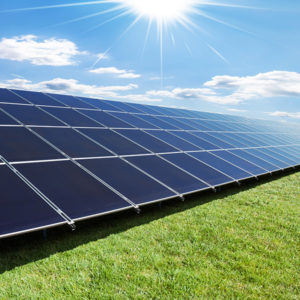 Vermont solar siting laws can pose a challenge to large-scale solar farm development. The difficulty in Vermont solar siting rises in proportion to the size of the proposed solar farm. Larger sites are much more difficult to develop than smaller sites, and no solar development will move forward without a Section 248 Permit.
Vermont solar siting laws can pose a challenge to large-scale solar farm development. The difficulty in Vermont solar siting rises in proportion to the size of the proposed solar farm. Larger sites are much more difficult to develop than smaller sites, and no solar development will move forward without a Section 248 Permit.
Developing Solar Power in Vermont?
What Is a Section 248 Permit?
Section 248 of Vermont law governs the development of energy infrastructure, including solar farms, wind farms, electrical grid equipment, power plants, and natural gas transmission lines. It is similar to Vermont Act 250, Vermont’s land use and development law, in that it seeks to minimize the environmental impact of new development and infrastructure.
Unlike Act 250, which is administered by District Commissioners and the Natural Resources Board, Section 248 is administered by the Vermont Public Utility Commission. Public input is more limited for Section 248 applications than for Act 250 permits. A Section 248 Permit eliminates the need for an Act 250 permit and for local zoning board approval.
How Can I Obtain a Vermont Section 248 Permit?
Smaller projects can submit a streamlined application to the Public Utility Commission. This process is usually expedited as long as solar siting does not meet significant public opposition.
Larger projects must complete a detailed Section 248 Application and submit it to the Public Utility Commission. These detailed applications must include data on the land that will be used, how much will be cleared, the size and output of the array, the efficiency of the solar, panels, its impacts on the existing electrical infrastructure and changes necessary for it to interconnect to that infrastructure, and what steps will be taken to mitigate the project’s environmental impacts during the construction and operational phases.
To successfully obtain a Section 248 Permit, for large projects, developers must be prepared to hire engineers (civil and electrical), surveyors and an experienced Section 248 attorney. Public hearings may be more involved for large solar farms and the Public Utility Commission may give more weight to public comments in such circumstances.
How Can I Improve My Chances of Getting a Section 248 Permit in Vermont?
While no project is ever guaranteed a permit, certain projects are more likely to be approved:
- Develop smaller solar farms
- Site solar farms on brownfields
- Develop net metering projects
- Obtain commitments from local utilities to buy power from the solar farm</li>
The Vermont Public Utilities Commission sees many similar applications each year and can quickly approve projects similar to those that have been approved in the past.
Any Vermont solar siting project should begin with the selection of an experienced Section 248 attorney. Hans Huessy and the MSK Attorneys team have successfully represented several clients in purchasing and developing solar arrays. The representations included the leasing of the site, permitting the sites, and financing of the projects, including a 5 MW facility in St. Albans and multiple smaller arrays, including arrays involved in net-metering arrangements. For assistance in obtaining a Section 248 permit, contact us online or call us at 1-802-861-7000.






